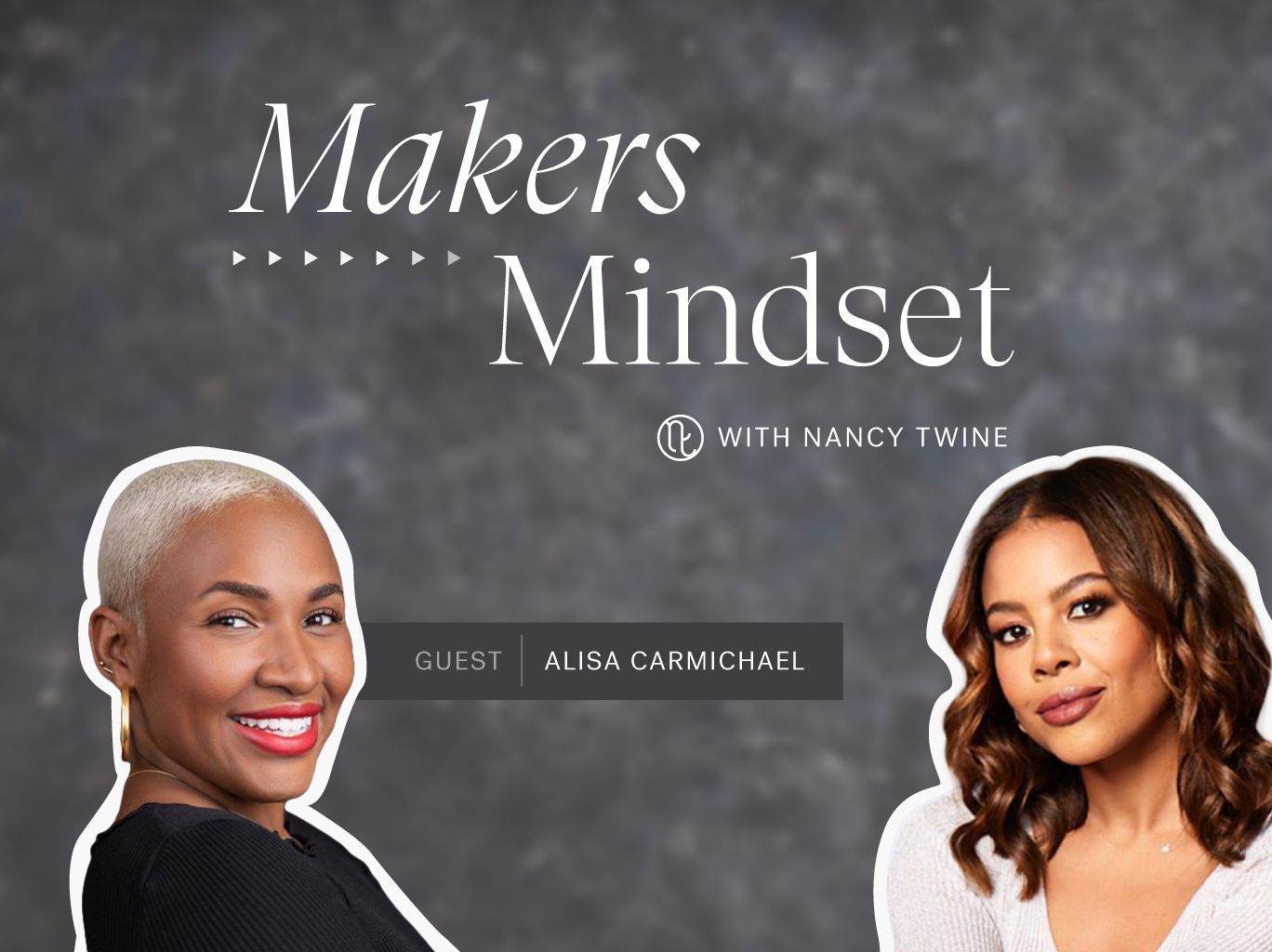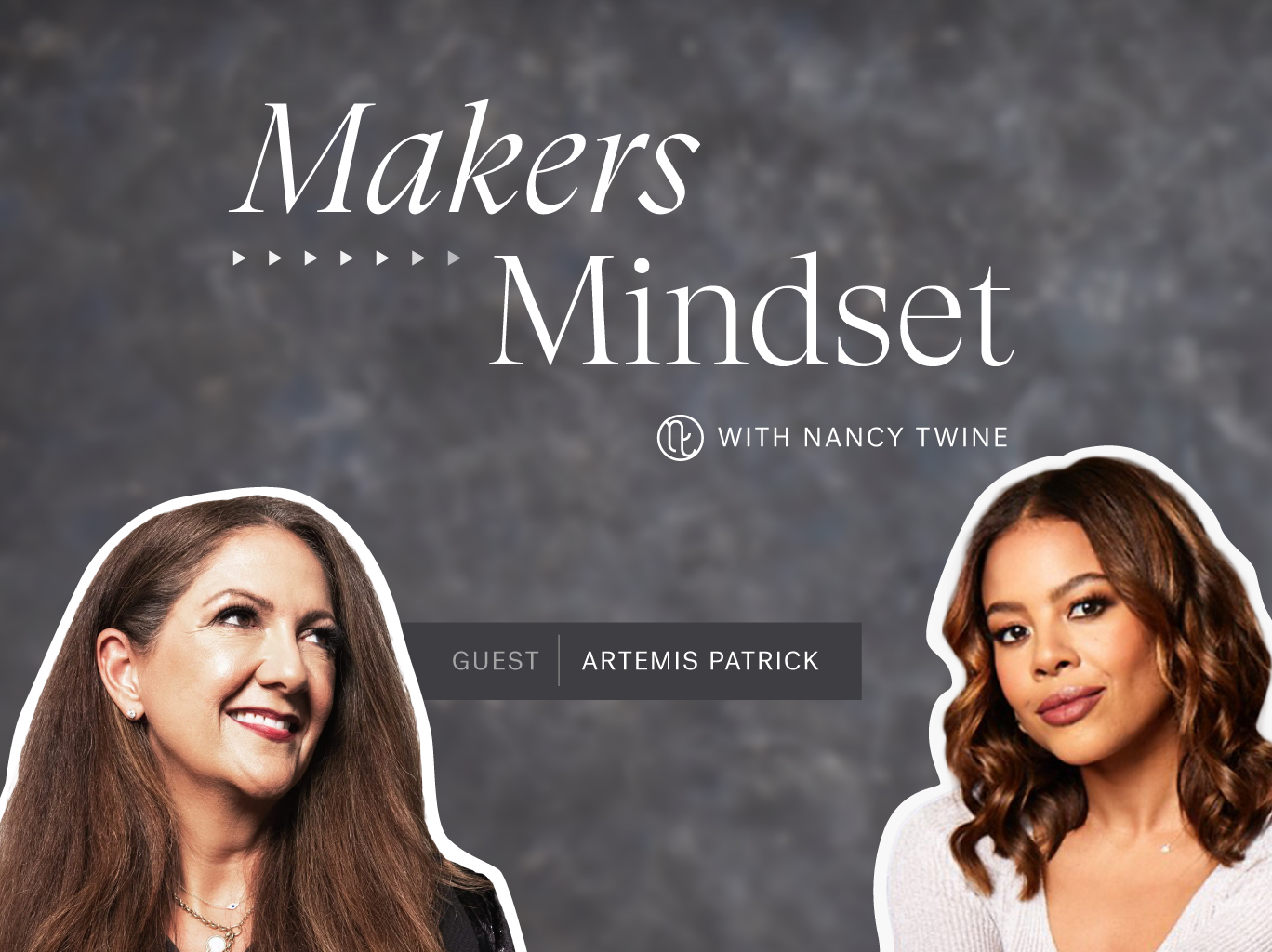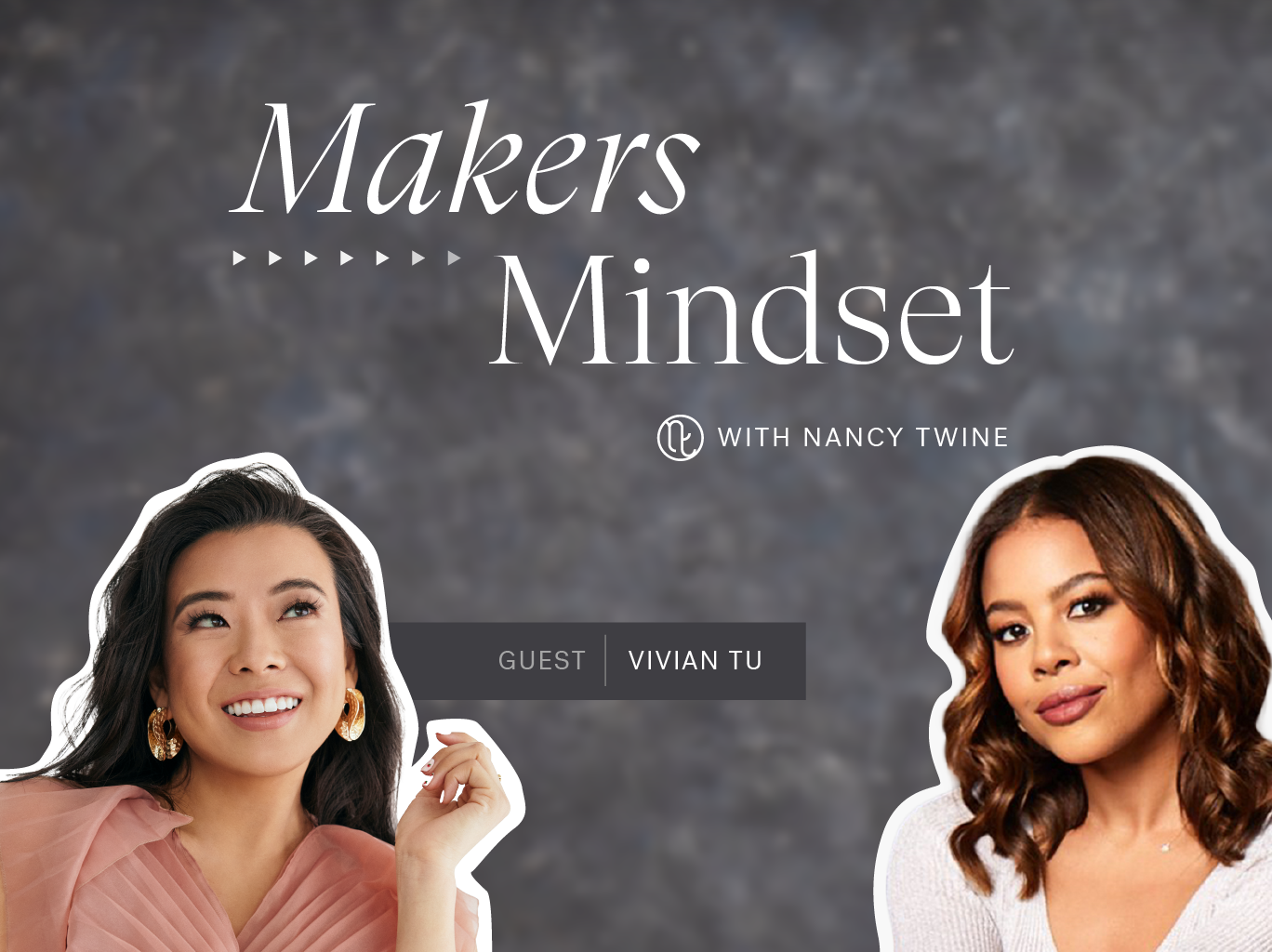I had Israel on my travel wish list for many years, and this past May, I finally took an immersive trip. The experience was NOT a vacation – rather, an educational trip to learn and discover Israel in a hands-on and intimate way. The cross-cultural nation is only slightly larger than the state of New Jersey, but despite its quaint size, Israel continues to make one of the largest impressions in the world. Sitting at the junction of Africa, Asia, and Europe, Israel is steeped in a rich mixed history and is a mecca of culture and holiness. The hybridized heritage of the country is part of what drew me to it in the first place. I’ve imagined what it would be like to take a dip in the infamous Dead Sea and walk through the lands of Jerusalem, but I also desired a deeper understanding of the people and life there.
The Backstory
The impetus to finally take the trip was through an opportunity offered to me through the Young Presidents Organization (YPO). YPO is a global leadership program connecting presidents and CEOs under the age of 45. They provide really helpful resources, education, and cultural immersion experiences that enhance personal and professional development. Like-minded company leaders gather to form a diverse, synergetic community.
I’m a big believer that exploratory travel (non work-related) is essential for entrepreneurial development and wellness. Prioritizing time away from your day-to-day can inspire creativity, generate new ideas, and strengthen your adaptability.
When YPO presented the opportunity to travel to Israel as part of a hands-on immersive experience, I knew I had to take part. YPO’s Touch Israel program was a three-day excursion with specially curated touchpoints on Israel’s past, present, and future. Today, I’m sharing some highlights from my trip with an itinerary you can explore on your first (or next) adventure through Israel. A sneak peek? It was everything I could have hoped for and nothing I could have expected.
My Itinerary
DAY ONE: OPENING NIGHT IN TEL AVIV
Getting to Israel was relatively simple. I flew directly from Newark to Tel Aviv. You can expect a 10-11 hour flight from the east coast. (Tailwinds helped my flight reach Tel Aviv in under nine hours.)
I was excited to finally enter Israel’s largest economic center and most populous city. It’s often assumed that Tel Aviv is the capital of Israel because of these attributes. Still, Jerusalem is Israel’s official capital and the second most populous area. (More on Jerusalem later.)
Nevertheless, the vibrant nightlife and modern architecture of Downtown Tel Aviv make you forget you’re in one of the oldest and most sacred lands on the planet. Its development and progressiveness attract businesses and newcomers from all over the globe.
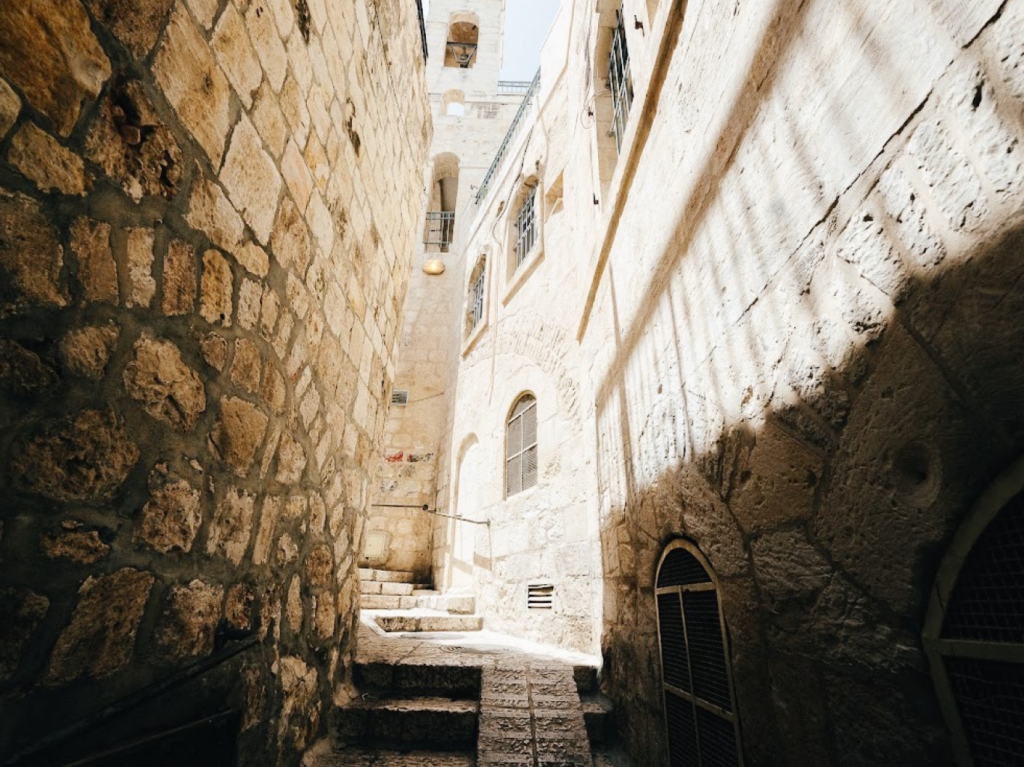
Having departed from the U.S. at night to meet Tel Aviv by morning, I was grateful to have arrived with enough time to nap before preparing to head to the Peres Center for Peace and Innovation for an opening event with YPO. The Peres Center for Peace and Innovation is open to the public. It provides a present-day outlook on Israel’s innovation projects to create sustainable growth and support for Israel and its people.
At the meet and greet, I connected with many of the 200 YPO innovators from Dubai, Kazakhstan, Vietnam, Australia, Malaysia, and various parts of Europe.
After the initial welcome, we entered the auditorium to enjoy an introductory seminar. We heard talks from Israeli leaders, including President Yitzhak Herzog. Every message spoke to Israel’s dynamic culture and resilience, and we were all told to prepare our senses for the days ahead.
DAY TWO: HISTORY + HEALING
If you plan to stop in Tel Aviv, understanding the country’s history and culture is essential. My recommendations for exploring this education come with a warning: Discussion of the Holocaust and militarism are ahead. While we can never fully prepare ourselves for the horrors that have afflicted humanity, we can take steps to acknowledge the past to prepare for a better future. I’ve learned about the Holocaust in high school textbooks and college lectures, but I’ve never had such an intimate, inside glimpse into tragedy until we visited the Yad Vashem. Yad Vashem is the World Holocaust Remembrance Center. It’s layered with the information classroom lessons often omit. Words could never encompass the profound emotion that reverberated throughout the space — the images, the videos, and the stories about the mass violence. It was heavy, but the experience left me with a deeper connection with the scar left on our global consciousness.

The trauma of the Holocaust echos throughout Israel today. I learned more about this during a specialty training session with the IDF — Israeli Defense Force.
Created to prevent events like the Holocaust, IDF requires every Israeli citizen who is Jewish, Druze, or Circassian over 18 to serve.
I got a first-hand account of IDF’s process through a training simulation. The experience was coordinated through YPO and gave us insight into the motivations and culture within the defense force.
Pre-training emphasized organizing as a team, communication, listening, and trust as imperative elements of survival. To put these values to the test, trainees are given paintball guns and taught to hit targets for accuracy with guidance before jumping into one of the most intense drills of my life.
We were paired with a soldier in IDF and instructed to climb a ladder to the top of the building. Then harnessed and attached to ropes held by our IDF partner, who slowly roped us down the side of a building as we shot at targets placed in the windows we scaled across with no control over our physical descent. We could only trust our partners, listen for their guidance, and focus on our tasks. Teamwork is at the epicenter of what they do because survival is required. It was a mental and emotional challenge that certainly planted a seed about the importance of relationships, even amongst strangers.
“Shabbat is a perfect reminder of the duality of our humanity — how we can both break and heal with time together.” – Nancy Twine
Balance is the key to managing a day of grief and physical exertion. To counter the heaviness of the day’s events, I took part in the Jewish ritual of Shabbat. Shabbat is a time of rest, family, and nourishing meals reflecting Jewish people’s observance of God and community.
That evening, Shabbat dinner was hosted at Carmei Yossef Olive Grove, shrouded in a forest. String lights hugged trees as candles illuminated the outdoor space. For Shabbat it’s customary to wear white when gathering. White signifies purity, spirituality, and transformation — all the energies you want welcome for a night of song, dance, and prayer. Shabbat is a perfect reminder of the duality of our humanity — how we can both break and heal with time together.

Dinner was an array of traditional Israeli dishes. I’ll share a few restaurant recommendations to explore on your trip to acclimate you to Israeli food culture. (Below)
DAY THREE: DESERTS + THE DEAD SEA
The Dead Sea was one of the wonders that inspired my venture to Israel. To say I was excited for day three is an understatement!
In Hebrew the Dead Sea is known as “Yam Ha-Melakh” (the Sea of Salt). It is the lowest point on Earth. The “sea” is actually a lake with saline waters. It’s so salty that fish cannot survive in it. (Hence the “dead” sea.) Its high concentration of dissolved salt makes it ten times saltier than the ocean and makes our bodies feel lighter.
To get to the Dead Sea, most people board a bus to begin the two-hour journey from Tel Aviv. You’ll exit the city and trek through long stretches of desert that descend lower and lower as you go.
There are a few resorts along the Dead Sea that range from luxury to family friendly. YPO had a designated spot for the day, but depending on where you choose to book, you’ll be able to determine your proximity to the site.
Sitting on the water is enough reason to visit the landmark, but the Dead Sea is also known for its healing mud. Before I entered the water, a woman greeted me with a tub of Dead Sea mud. She coated my body in thick gray layers. It had such a unique texture, like custard, and each coating had such a smooth, luxurious feel. The spa benefits of the mud come from the mineral-rich soil. It’s said to be the most mineral-rich mud on earth infused with salt and magnesium, providing some healing skin effects.
I waited for the mud to dry before entering the sea to receive the most benefits to my skin. When the time came to “rinse off” the mud, I finally took the dip into the waters I had been dreaming of.
Experiencing the buoyancy of the Dead Sea was something outside of what I could have imagined. The dynamics of the water propels you upward. All that salt counters your body weight in a way that leaves you feeling so supported that you can practically sit on the water and read a book.
Once I settled into the saltiness, I watched as the mud dissolved from my body, leaving my skin incredibly soft. The Dead Sea experience is well-worth the hype and should not be missed on your Israel trip.

YPO HIGHLIGHT
I have to share this next YPO moment. While it may not be an accessible activity for every trip, it was one of the most memorable events of my trip.
As evening crawled over the horizon, our YPO crew traveled to the Foothill of Masada in the Judean Desert. Once we arrived at our site, we were met by the Jahalin Bedouins, a Palestinian tribe that occupied the desert. We sat among camels, transported to a scene from ancient Israel. Darkness took over the sky, and you could only see the stars beside the fire that provided light.
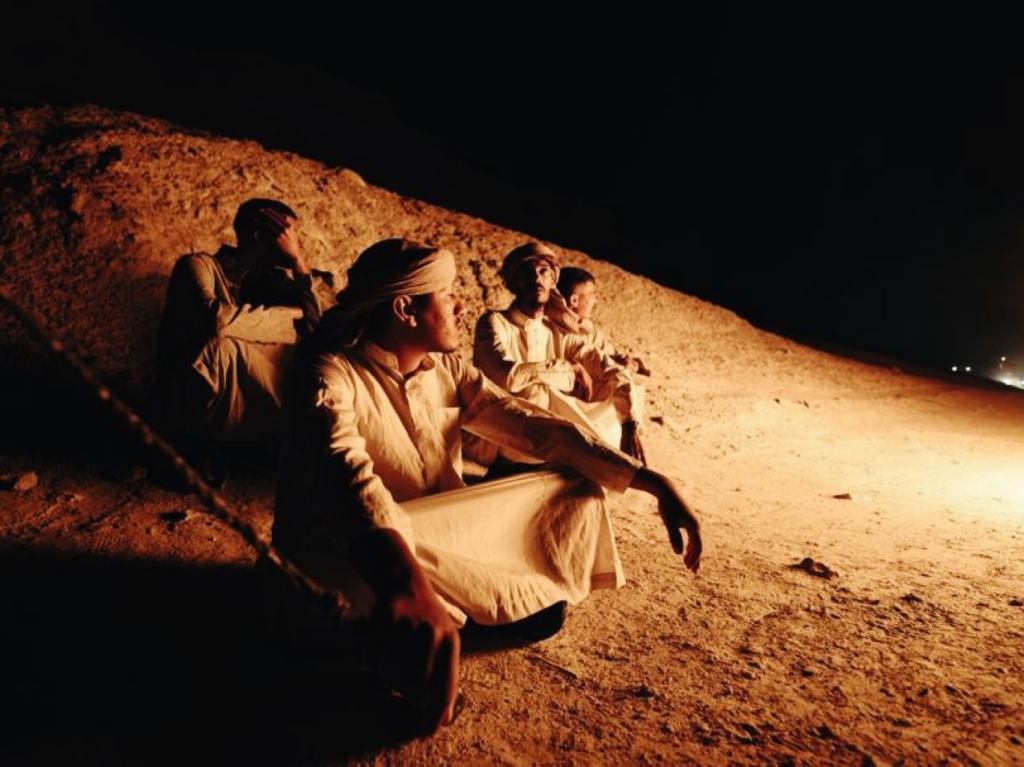
Even among a group of 200, we felt small standing in the middle of the dark, moonlit desert. Moments later, with the push of a button, colorful light beams broke into the air, and music echoed across the dunes. The desert party began as a DJ took the stage, and fireworks competed with the stars.
DAY FIVE: THE HOLY LAND
Our last day was a spiritual gem. Everyone who comes to Israel should plan and brace themselves for a once-in-a-lifetime opportunity: Exploring the world’s most debated and holy land of Jerusalem.
Jerusalem is the crux of three of the world’s largest religions. Christianity, Islam, and Judaism have roots in the city that rest between the Judaean mountains between the Dead and Mediterranean Seas. Tensions have grown for centuries over the ownership of the space, but even within those conflicts lies a deep respect and love of divinity.
Jerusalem’s rich culture and history is a gift. Taking a guided tour is the best way to learn about the different religions within that bracket of the world as you walk down cobblestone streets from thousands of years ago.
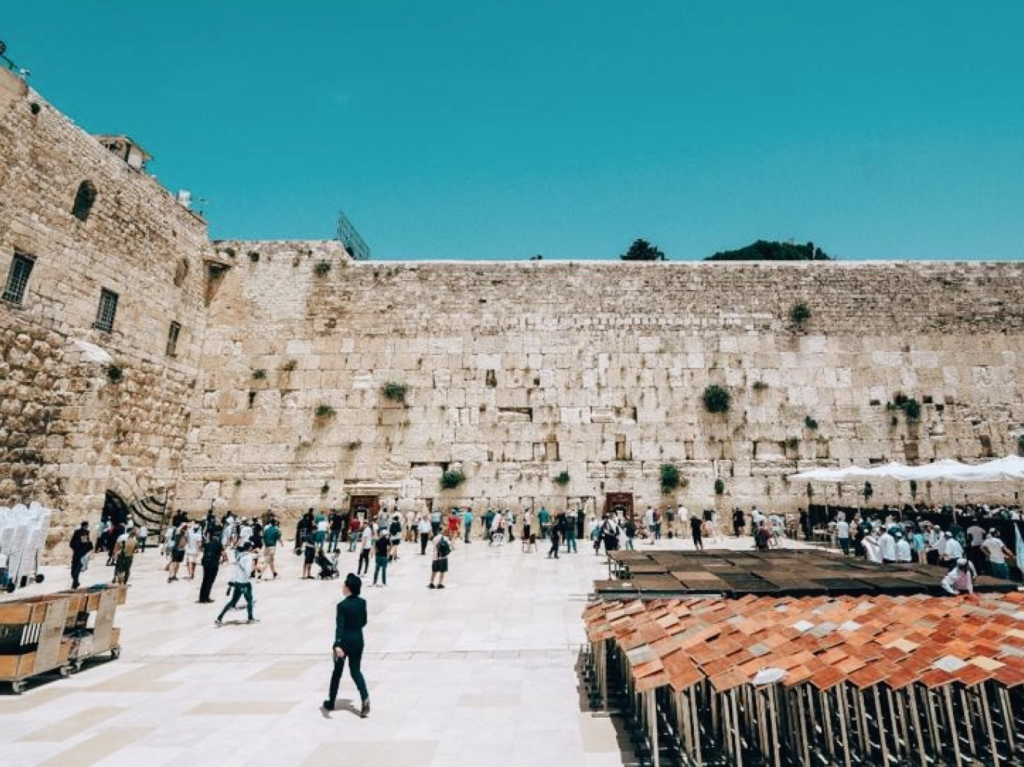
No visit to Jerusalem would be complete with a pilgrimage to the Western Wall. Known as the “Wailing Wall,” this holiest site of the Jewish faith is a remnant of a fallen temple. The Wailing Wall is a place of grief and prayer for those who venture there. The open-air synagogue is filled with notes and prayers tucked into the cracks of its stone from worshipers who come to feel closer to God and their faith.
It’s easy to be enveloped in the emotion of those around you as they share their messages with divine prayers and heartfelt pleas. The visit was an adventure of connection beyond our scope of recognition, and it’s a day you will never forget.
My experiential journey through Israel deepened my appreciation for all the ways innovation and tradition impact culture. As an entrepreneur, the experience opened my eyes to new ways of thinking about preserving tradition while being open to change. As a founder of a beauty brand, staying true to your brand DNA while evolving to stay relevant in a world of changing trends is a very delicate balance.
While there was much more to do and explore in the country, this beginner-friendly itinerary is a great place to start. Be sure to review my fact sheet and restaurant list to make the most out of your Israeli adventure.
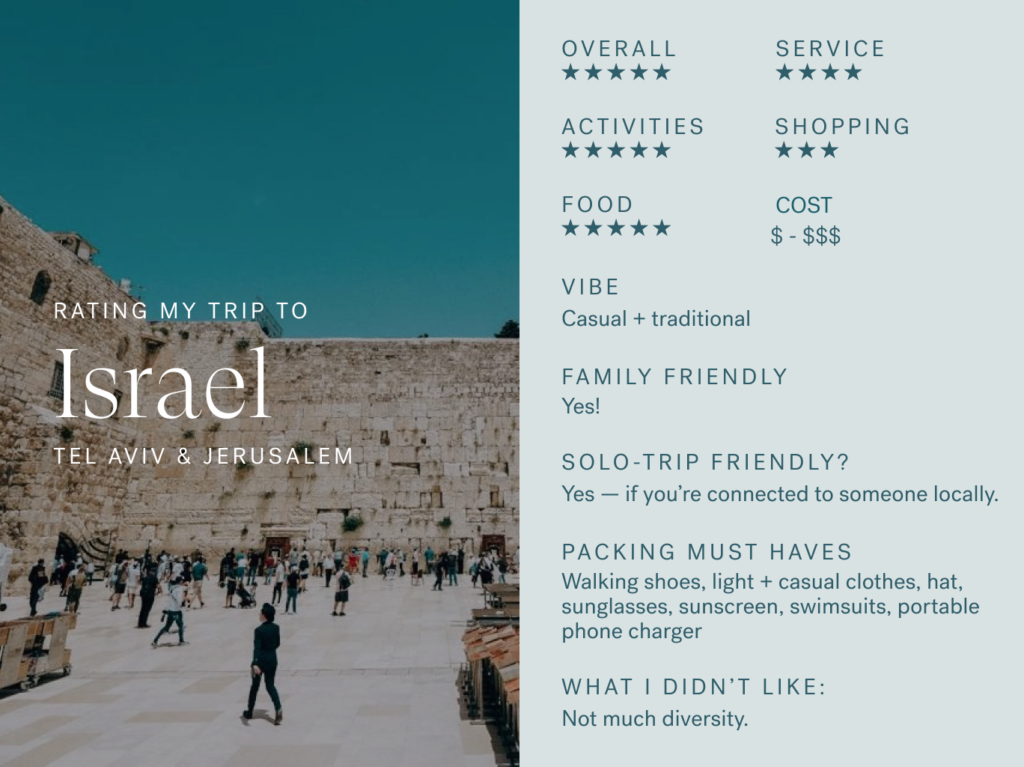
Explore where I’ve been and let me know: Is Israel on your travel bucket list? Have you been? Share your experience with me.
